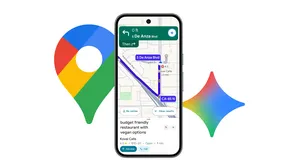Bringing slave dwellings out of the shadows with Google Street View
Editor’s note: In honor of Juneteenth, we’re sharing this story about a Google Earth Outreach project that highlights African American history. In today’s post, Justin Reid, Director of African American programs, and Peter Hedlund, Director of Encyclopedia Virginia—both of the state humanities council Virginia Humanities—talk about documenting slave dwellings using Google Street View.
On Virginia’s rural farms, in city townhouses, and beneath grand plantations are spaces where enslaved African-Americans lived from the 1600s until sometimes long after Emancipation. Every day, people pass by these slave dwellings, which are often in disrepair, with no idea who lived there. These dwellings and other African-American historic sites are an important part of Virginia’s history—yet out of the nearly 250,000 cultural and historic resources documented by the state, only one percent are officially identified as reflecting African-American history.
It’s easy to forget about the painful yet important parts of American history when we can’t see them. By immersing ourselves in the places where enslaved communities once lived, we are confronted with a history that cannot be ignored. So to virtually preserve these living spaces and give people access to them, we created custom Street View imagery for tours of a dozen slave dwellings throughout Virginia, which date from the late 1700s to the mid 1800s.
How virtual preservation opens doors to slave dwellings
Several years ago, when Google Street View began to include views of interiors, we saw an opportunity to document slave dwellings for Encyclopedia Virginia, where we collect resources about the state’s history and culture. Most of the former housing sites for enslaved people are on private property, and therefore not open to visitors. Our virtual tours give access to places that people can’t visit in person.The Street View tours also play a role in virtual preservation. Many of the dwellings are in poor condition—even in worse shape than when we started photographing them a few years ago. By creating the virtual tours, we preserve the dwellings for future generations.
For the tours, we consciously chose a range of dwelling types and locations to highlight how ubiquitous slavery was throughout Virginia—from the Eastern Shore to Mecklenburg County. People tend to think that enslaved people only lived on rural plantations. But we have tours of slave dwellings in urban cities like Alexandria and Richmond, which challenge the stereotypes of how enslaved people lived.
Ensuring enslaved people’s place in history
Justin has a personal connection to the Street View tour of a slave dwelling at Ampthill, a former plantation in Cumberland County. His great-great grandfather, Reverend Jacob Randolph Sr., was born into slavery at Ampthill in 1859. The dwelling in the tour, a brick two-story structure, is beside the main plantation house; the kitchen quarters building, where enslaved people also lived, still stands.The Ampthill slave quarters, where Justin’s great-grandfather may have lived as a child, illustrate the challenges of documenting dwellings. Previous owners of Ampthill thought one of the structures was a post-Civil War weaver’s cottage. When we brought Jobie Hill, a preservation architect and founder of Saving Slave Houses, to Ampthill, she immediately identified the building as a pre-Civil War slave dwelling. So many slave houses are misidentified, which hurts efforts to document them.
We hope that if more people are aware of slave dwellings and view our Street View tours, more sites can be documented and perhaps preserved—and more of us recall the enslaved people who are too often left out of our historical narratives. The people and the places they lived in deserve to be part of the American story.






